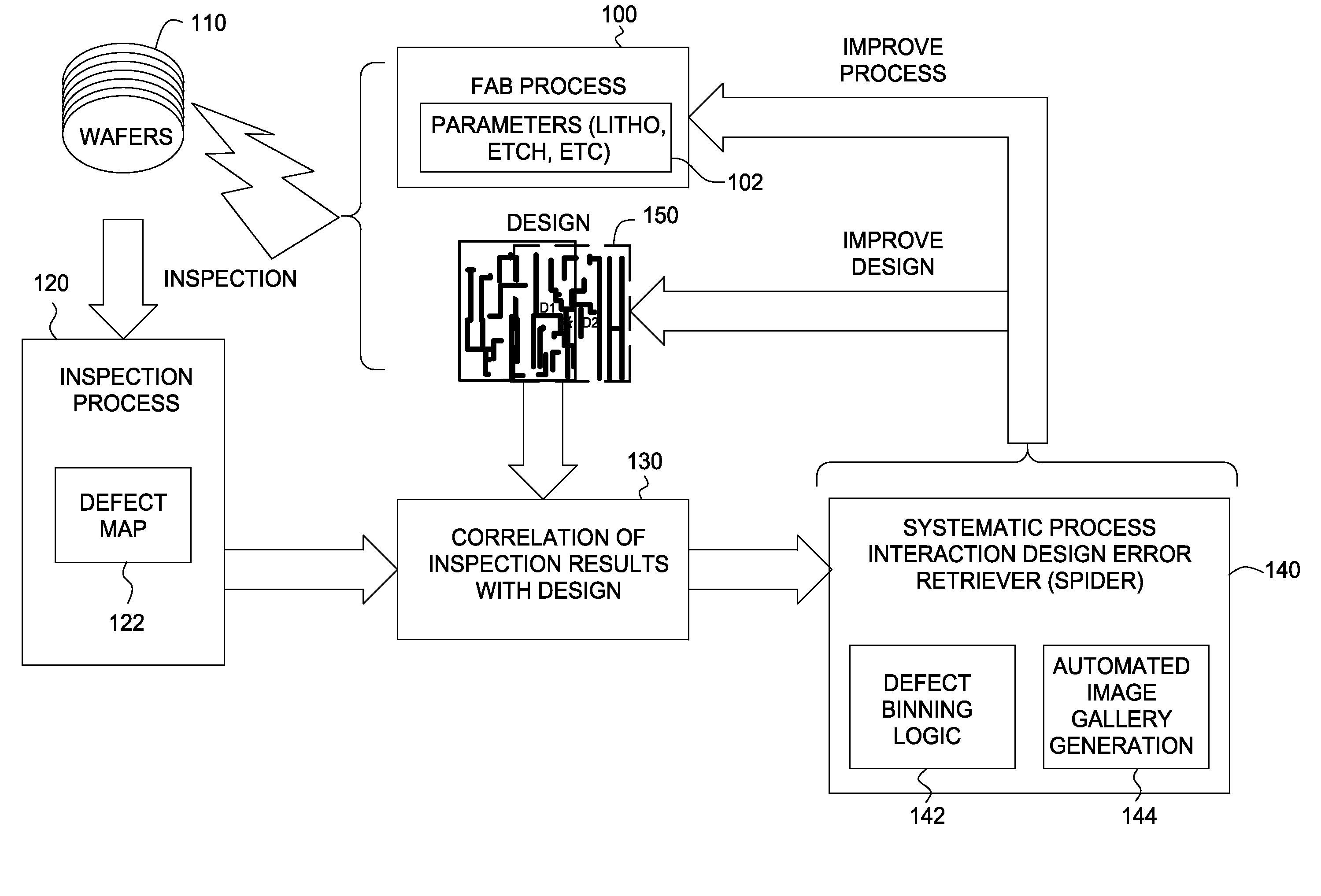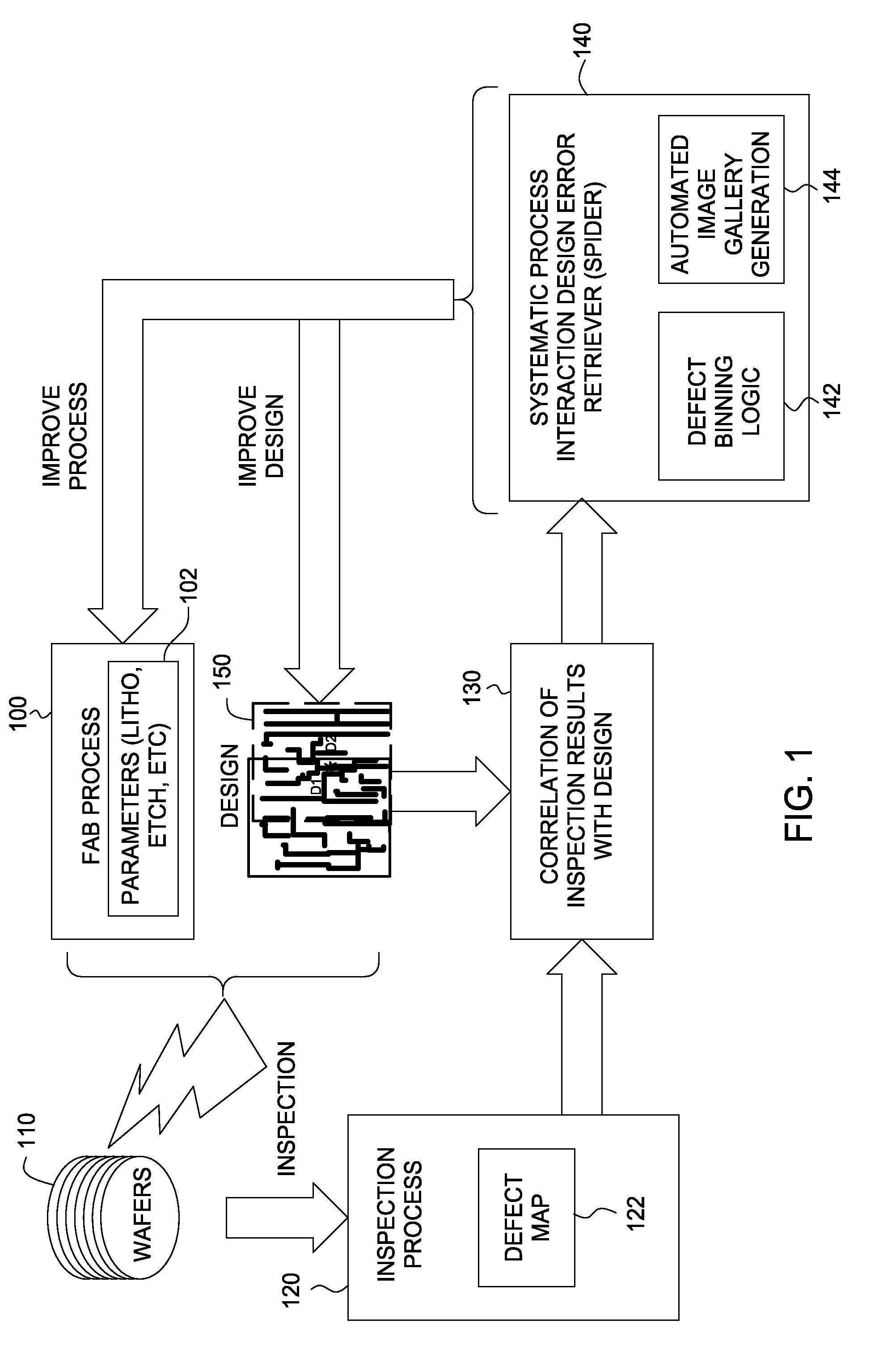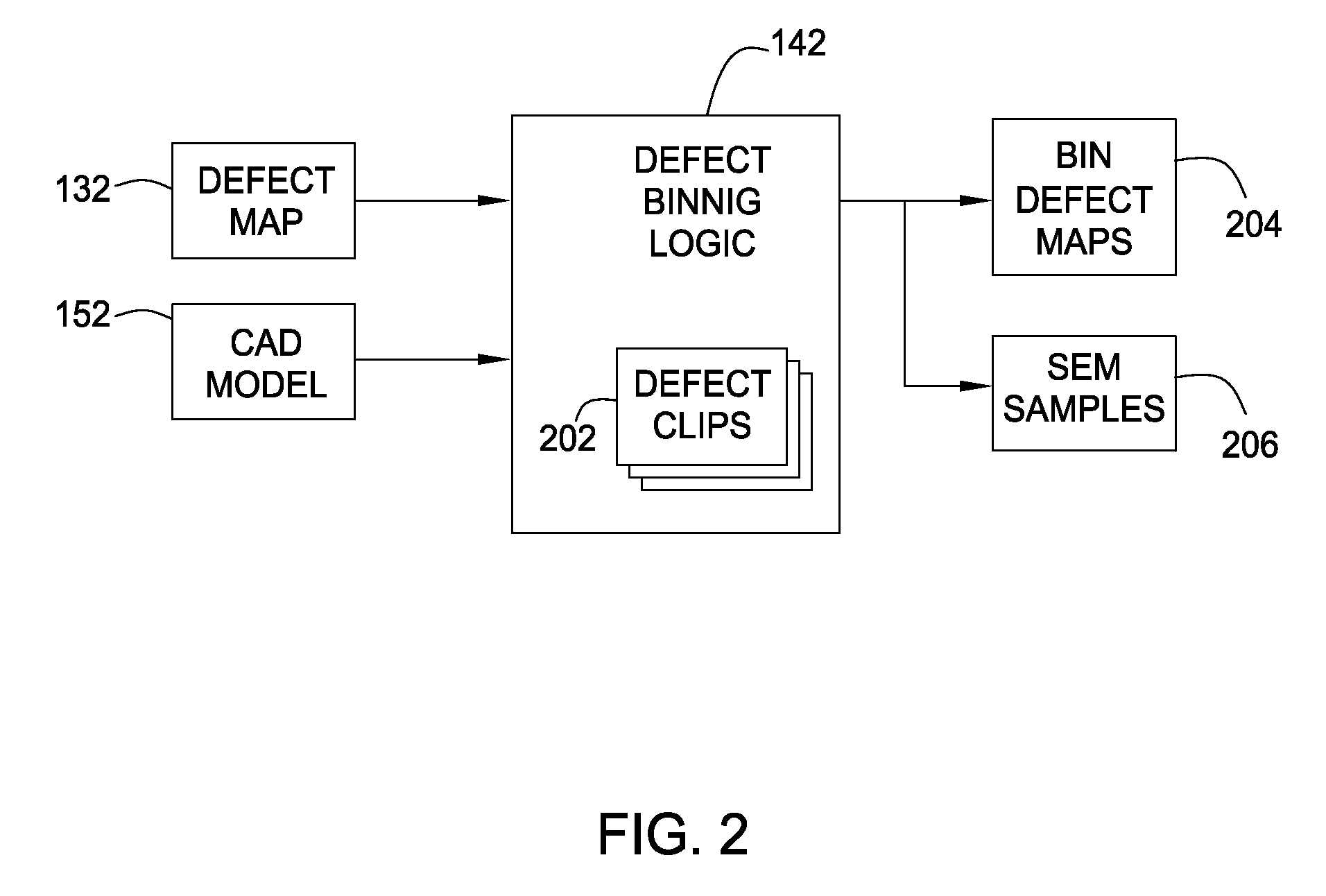Grouping systematic defects with feedback from electrical inspection
- Summary
- Abstract
- Description
- Claims
- Application Information
AI Technical Summary
Benefits of technology
Problems solved by technology
Method used
Image
Examples
Embodiment Construction
[0040] Embodiments of the present invention generally provide methods and apparatus for detecting defects on workpieces, such as semiconductor wafers and masks used in lithographically writing patterns into such wafers. For some embodiments, by analyzing the layout in the neighborhood of the defect, and matching it to similar defected neighborhoods in different locations across the die, defects may be categorized by common structures in which they occur. This automated categorization allows critical structures to be identified for further investigation into the relationship of design features and / or process parameters (design process interaction) that cause the corresponding defects.
[0041] For some embodiments, software simulations (e.g., OPC modeling or Chemical Mechanical Planarization) may be performed to generate a list of failure-potential locations (hot-spots) across a die. Inspection of actual detected defects may indicate that not all of the predicted failure locations resu...
PUM
 Login to View More
Login to View More Abstract
Description
Claims
Application Information
 Login to View More
Login to View More - R&D
- Intellectual Property
- Life Sciences
- Materials
- Tech Scout
- Unparalleled Data Quality
- Higher Quality Content
- 60% Fewer Hallucinations
Browse by: Latest US Patents, China's latest patents, Technical Efficacy Thesaurus, Application Domain, Technology Topic, Popular Technical Reports.
© 2025 PatSnap. All rights reserved.Legal|Privacy policy|Modern Slavery Act Transparency Statement|Sitemap|About US| Contact US: help@patsnap.com



